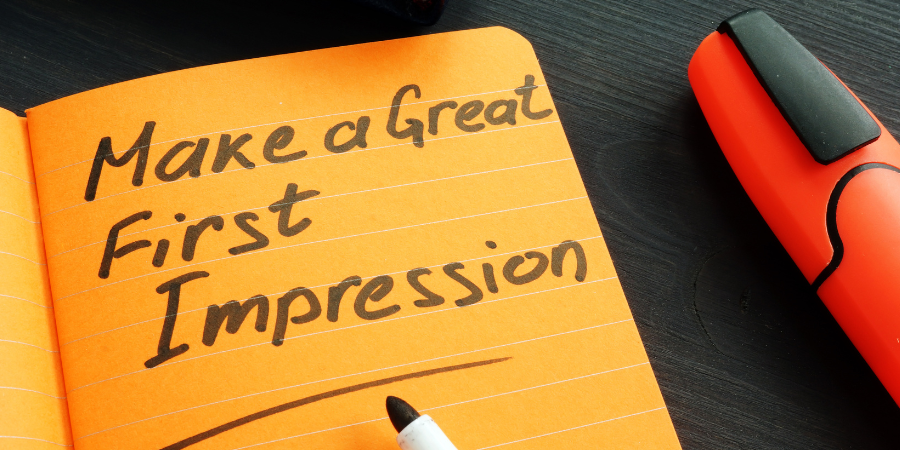
You’ve probably heard the quotation ‘You never get a second chance to make a first impression’. It’s a clever quote, but it’s also very true. If that first impression is less than great, you’ll have to work quite hard to overcome that.
When you’re planning to stand in front of a group and make a presentation, it’s not just about how they see you, but how they see whatever the presentation is about.
So, you want to impress people with your presentation – what’s the secret?
Well, there isn’t just one – there are a few!
Planning is critical
Start with the end in mind – what do you want your audience to think or do when your presentation is finished? Even more important, what do the people in your audience want to get from your presentation?
Once you have those two key pieces of information you can ensure that everything in your presentation takes your audience to the destination they want, while achieving your own goal too.
When you know where you’re going then you can plan the steps that will take you there.
Be ruthless
If you are enthusiastic about your subject (and you shouldn’t be making a presentation on it if you aren’t), it’s easy to get carried away and swamp your audience with too much information.
I find it useful to mindmap my plan so I can see the key points that take me to the conclusion and then choose carefully how much information on each one of those I need to include. When you’re working with a skeleton plan like this you are likely to be much more objective than if you work in a linear way.
For every fact, diagram, quotation, statistic, case study and anecdote ask yourself ‘will this help my audience to make the decision I want them to?’ If the answer is ‘yes’, include it. If it’s ‘no’ then leave it out – no matter how good the story is! If it’s ‘maybe’, it’s probably a ‘no’, but you like that piece of information and want to include it!
Visual aids
For most people ‘visual aids’ equals a slide presentation. However, don’t forget that visual aids can be objects that help to make your point – be creative, it will help to make your presentation memorable.
When it comes to slides – remember that they are VISUAL aids, not verbal aids. Many people use their slides as their notes – and this just results in cluttered slides that are very forgettable. The rule of thumb for slides is to only use them to demonstrate something that is highly visual, or for numbers. But don’t put ALL the numbers on them, just the key figures – so the contrast between last year and this year, not every month in between. If you have a lot of data that your audience need, create handouts – but only give them out at the end, you don’t want people reading their handouts (or your slides) instead of listening to you.
Avoid whizzy graphics, they tend to be more irritating than impressive!
If you’re using video, ensure that it’s short and powerful, nobody wants to watch a boring video that goes on for a few minutes. That’s the quickest way to disengage your audience.
Know your stuff
You shouldn’t be doing the presentation if you don’t. However, it’s a good idea to learn your opening, to grab your audience’s attention and to avoid the memory wipe that can happen if you’re very nervous.
While you can use notes to keep you on track, don’t read them. A few index cards with your bullet points on them are a good way to stay on track. Fasten them together to ensure they don’t get out of order – one of those treasury tags (a short cord with a metal T-bar on each end) works well.
Also learn your close – it’s important. Don’t simply stop and say ‘That’s it, thank you for listening’. What is the big takeaway you want people to have? A powerful finish will help people to remember you and your presentation.
